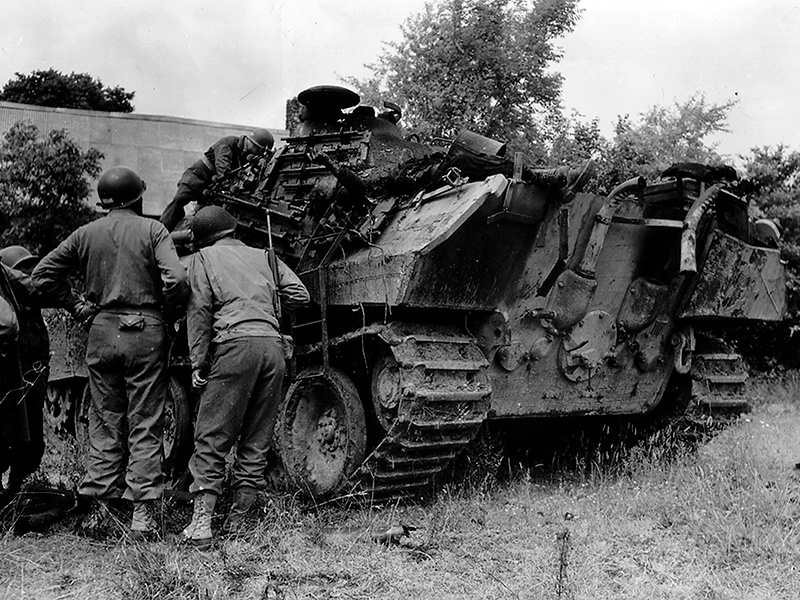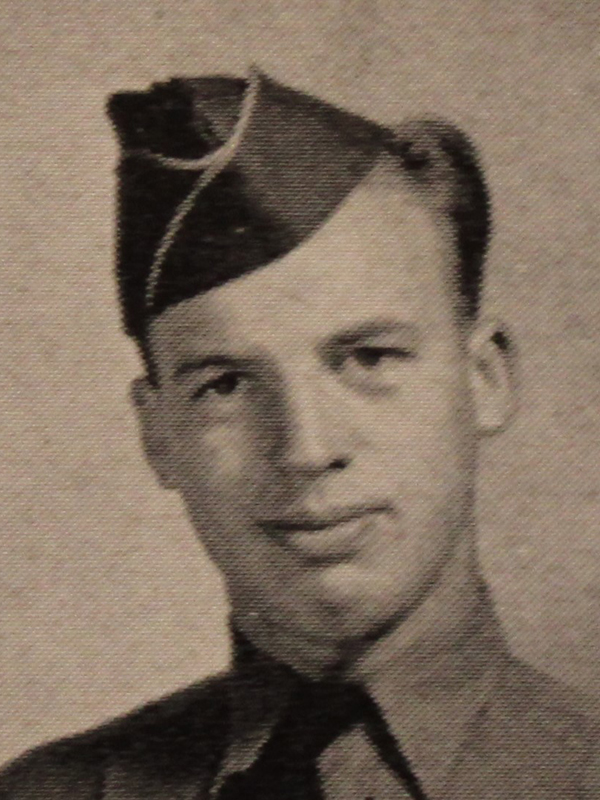
Enlistment and first campaigns
Faulkner was born on June 9th, 1921 in Kentucky. At 17 (1938), he enlisted in the Army at Fort Thomas, and was assigned to Item company, 10th Infantry Division. In 1940, he is transferred to Fort Bragg and is affected to Fox Company, 39th Infantry Regiment as a rifle squad leader. Soon, he earned the function of platoon sergeant. He is then transferred at Easy Company because of some trouble he went into with sailors in a pub.

Faulkner (left) and Joe M. Barnett (right)
When in England, his regiment practised amphibious operations against the Scottish Black Watch division, and then boarded the USS Thomas Stone to reach the coasts of North-Africa, in 1942. On November 7th, he received his baptism of fire, even if the troops would land one day later only: a German submarine torpedo went into his ship. Hopefully, most of the people involved survived, and soon found themselves on the paths of war.
The 2nd Battalion made his first major battle in El Guettar, against the notorious Afrika Korps, commanded by the famous General Rommel. At that time, Faulkner was the Easy Company, 3rd platoon sergeant. The enemy was clearly superior to the Americans that were inexperienced. U.S. troops were slaughtered. His 3rd platoon, commanded by Lieutenant Russel Snellind, was down to 1-14 men. Of the five officers in his company, only Snelling survived without a scratch. Faulkner was hit in the hand from a piece of shrapnel. After only four days, he came back to his platoon, and fought later on in Kasserine pass. After came Sicily, and the hill 1029 in the vicinity of Troina.
Europe
After Africa and Sicily, the division came into England to prepare the Invasion of France. Technical-Sergeant Faulkner, still platoon sergeant of the 3rd platoon, same company, landed on Utah Beach on June 10th, 1944, and drove into Normandy and the Cotentin Peninsula towards Cherbourg, that the regiment seized. His platoon was cleaning the bunker where the last Germans were hiding. During its mission, Faulkner’s platoon captured Lieutenant-General Karl Von Schlieben, commander of the German forces that were holding the Cherbourg peninsula, and his staff including Rear Admiral Hennecke. They captured the first German General and flag on the European continent.

Surrender of Von Schlieben and Hennecke on 26 June 1944, coming out of their bunker to surrender to Faulkner’s men.
After Cherbourg fall, the battle of hedgerows came up, some of the hardest fighting of the War in ETO. Faulkner took part in the fights near Le Désert, running back a German desperate armored counter-attack. Then the Allied breakthrough in Saint-Lô and the race began across France and Belgium to reach the German border. The 2nd Battalion earned the Distinguished Unit Citation during the fights near Le Désert, and Faulkner was awarded a second Silver Star.

On 13 July 1944, after the Panzer Lehr attack on the American bridgehead at Saint Fromond on 11 July, the Panther belonged to a 1. Kompanie. One of the tankers burnt while trying to escape from the burning tank, his body, arm outstretched, is near the turret on top of the tank. This Panther auf A was destroyed by a hit from a TD M10 of the 899th Tank Destroyer Bn, supporting the 9th Inf.Div. at La Caplainerie north of Le Dézert (6 km south-west of Saint Fromond).
In Belgium, he was promoted to first-sergeant, by his company commander, Captain Kenneth Hill. Faulkner led Easy Company as Topkick through the wet and cold battles that followed, in the Hurtgen and Ardennes forests, across the Roer River to the Rhine at Remagen and on to the Elbe River and the end of War in Europe.
An Incredible Hero
During his 33 months of fighting, training, enduring the desert, mountains, valleys, storms, rain, snow, ice, etc., that incredible soldier from a coal miner’s family survived and lived to tell about his experiences. During these combat on two continents, he was awarded 2 Purple Hearts, 2 Silver Stars, 2 Bronze Stars with Valor, the Combat Infantryman Badge, French and Belgian Croix de Guerre and the European, African and Middle Easy medal with 8 Battle Stars. He even managed to be awarded the Good Conduct Medal, even with his troubling behavior.

As if it wasn’t enough for this hero, he volunteered again during the Korean War, assigned to Easy Company, 279th Infantry Regiment, 45th Infantry Division, Korea where he lost an eye. In addition to his military awards, he received also several combat decorations from both US and Korean government.

He retired in 1962 from the Army, after 22 years of service. He worked in Hughes Aircraft Company in California and retired in 1990. He and his wife lived in Simi Valley, had two children: Lee and Kelly. He passed away on August 14th, 2014, and was buried in Arlington Cemetery on October 2nd, 2014, with military honors.

His incredible service and dedication to his men and his nation must inspire today’s generations. He definitely exemplify what is a Hero.
Adapted from « The Legacy of the Purple Heart »


Comments are closed